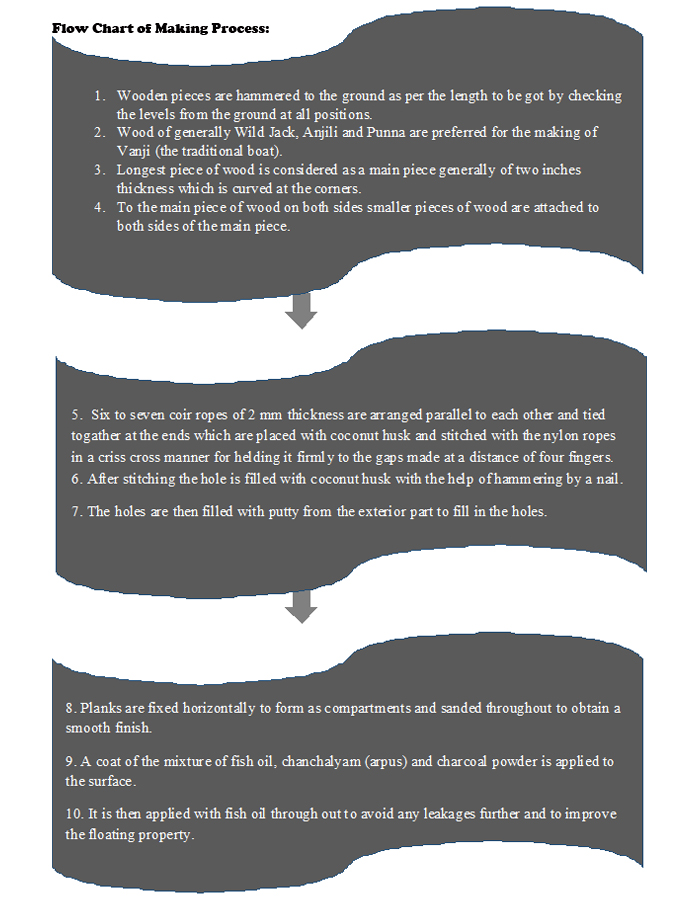Vanji Making - Ernakulam, Kerala
The wooden pieces of Wild Jack, Anjili (called locally) and Punna (garcinia or mangosteen family) are generally preferred for the Vanji (the traditional boat). The wooden pieces are hammered to the ground at various places as per the length firmly by checking the levels at each point. The longest and the main piece of wood are made to curves by heating the wood and curving the corners. The bottom woods would generally be of two inches thickness as after the completion of the making they will be fully in water. The long piece of wood is fixed firmly to the pieces of wood that is hammered to the ground.
They are placed by the smaller pieces of the similar shapes on both the sides of the main wood piece. Holes are made on the ends of the wood pieces with the sawing machine with four finger gap each facing the long, main piece of wood (central plank) of the curve shape.
Six to seven coir rope of 2mm thickness are arranged parallel to each other and tied together at the ends. Between the planks of wood the coconut husk is placed to which the coir ropes are stitched together with the nylon rope and needle in a criss-cross manner for holding it firmly to the gaps. The wooden planks are placed sides to the main plank and stitched on one side, then the other side plank is placed and stitched. For about four to five piece of planks are placed to the main piece and then the corner wood piece called the Kaavatam is placed and filled with coconut husk, coir rope and stitched.
Minimum of two people are required with one passing the rope over the bundle of coir’s by tightening to a condensed mass and the other pulls to obtain the criss-cross pattern. As there are small holes after stitching they are then filled by taking the coconut husk in thicker layer and inserting it by hammering with the nail. All the corners where it is stitched is filled with putty (wood filler) to close the gaps from the exterior to obtain a smooth surface.
Blocks of wood are placed some distance away from the corners horizontally at equidistance and a plank is placed below the blocks to make it into compartments. Especially when it is taken for the fishing purpose the fishes in the net is not lost as it will be in the compartment and they can concentrate on rowing till they reach the banks of the backwaters. In case of travelling the main people for rowing sit on the corners and the remaining in the middle portion for easy travelling.
Sanding is done on the surface to obtain a smooth finish of the vanji such that any scratches or gaps can be covered further by applying the putty. After which the mixture of fish oil, chanchalyam (arpus) and charcoal powder are applied on the surface either by a brush or a waste cloth. The vanji is applied with Fish oil (Sardine mostly) to improve the floating property of the boat to avoid any further leakages.




















